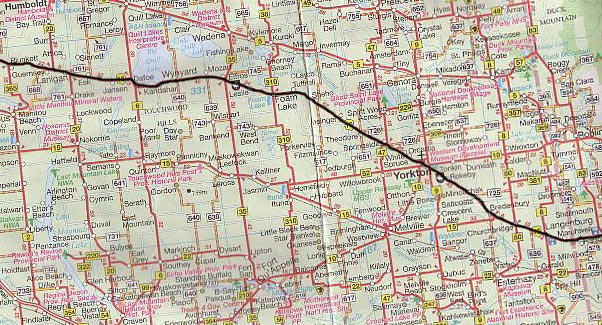
For example, when the #6 train "jumps" across from Park Avenue to Lexington Avenue as it travels north, this is shown as a bend on the Kick Map as it would be in a topographic map. The Kick Map employs "route bends" in a subway line's route to signal to the user important aboveground road changes. When the Kick Hybrid Map acts like a topographic map The L Line comparison (from the top): the Vignelli Map, the Kick Map, the current MTA Map. One premise of the Kick "hybrid" map is that while most of the time a straight line is the easiest line to understand, there are important exceptions. It is designed with a combination of both diagrammatic and topographic features, thus enhancing the strengths and eliminating most of the weaknesses of both types. The Kick Map's hybrid concept doesn't allow the strict dogma of either type to get in the way of the map's primary function: to display the whole system and its relation to the city as clearly as possible. Used alone, each makes the subway system very hard to understand for a surprising number of people. Both map types have inherent strengths and weaknesses in their attempts to translate the maze of this complex system.

The Kick Map is a "hybrid" concept that resolves the 50-year debate between the exclusive use of either a diagrammatic or topographic mapping of the New York City Subway. This is why the numerous geographical errors that can be found in a NYC subway diagram map (like Massimo Vignelli's 1972 MTA map infamously placing the 50th Street and Broadway stop west of 8th Avenue instead of east) are quickly spotted and glaringly "wrong." Any location - take 42nd Street and 7th Avenue as an example - places you in the grid, which makes it easy to judge distance and location. (The chaotic tangle of these three competing routes, as they meander and fight their way through the dense street plans of lower Manhattan, downtown Brooklyn, and Long Island City, is the most difficult aspect of the system to map clearly and accurately.)īecause New York City's subway generally follows its gridded street routes, there is a strong psychological link between the subway and the aboveground topography that is not found in a city like London. Its history of three separate and competing subway systems that were poorly coordinated to work as a whole system. Its gridiron street patterns in four boroughs with the "cut & cover" subway tunnels and elevated lines that follow these street patterns.Ī system of many of the subway lines running local, then express, then back to local along their route. The narrow geography of its principal thoroughfare, Manhattan Island, which has 17 separate lines running up and down midtown alone. There are four significant and conflicting aspects that make the New York City subway impossible to successfully map with just a diagrammatic or just a topographic format. To understand the challenge of visually communicating New York's subway one must understand New York's unique geography and its street system, both of which have an impact on the mapping. The unique complexity of New York's subway system In short, a better-designed subway map will make our subway system more open and accessible. For this reason the design of the subway map can directly influence ridership numbers and can indirectly have an effect on New York's traffic congestion and pollution.


A well-designed map not only welcomes and empowers novices to use the subway but also encourages additional use for regular "home-to-work-only" commuters to use the subway for recreational destinations where they might otherwise take a car. The subway map is the key to understanding this most complex subway in the world, which has 26 separate lines and 468 stations. Created with clarity and ease of use, it allows riders to navigate this vast system easily and without uncertainty. The Kick Map is designed to get more people to ride New York City's subway system.


 0 kommentar(er)
0 kommentar(er)
